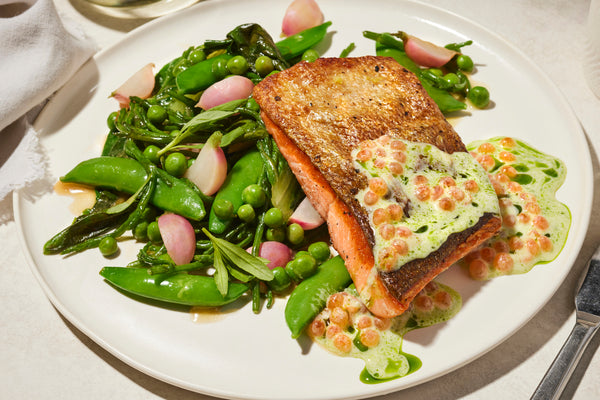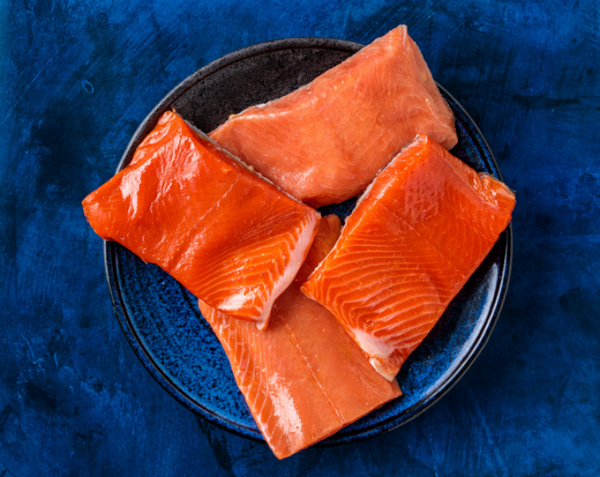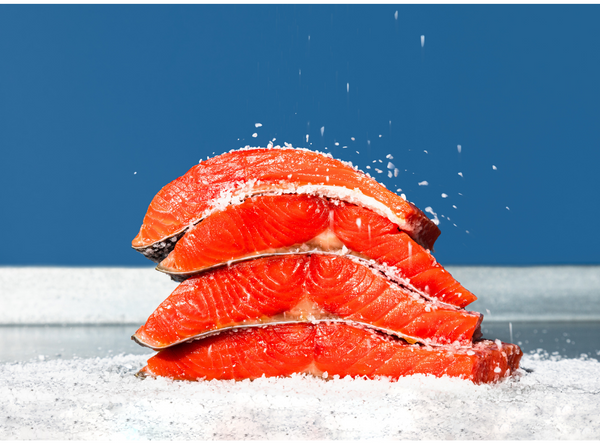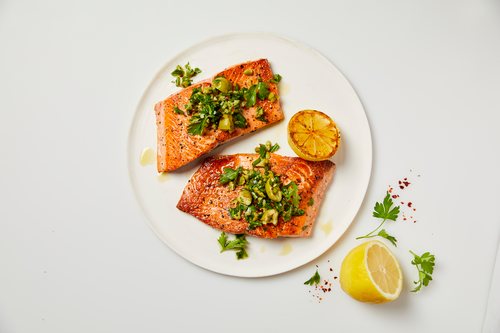
Wild Alaskan Sockeye Salmon Filets (6oz)
Due to high demand, limited inventory is available.
2214+ ordered recently.
Product Description
6 oz filets
Experience the rich flavor and health benefits of wild caught alaskan sockeye salmon sustainably caught straight from the pristine waters of Alaska by your personal fisherman Kyle Lee. Packed with high-quality protein and rich in omega-3 fatty acids, this wild-caught sockeye salmon supports brain function, eye health, and heart wellness.
✔ Hand-cut & flash-frozen for peak freshness: Each sockeye salmon is hand-cut into 6 oz portions, then individually vacuum-sealed and flash-frozen immediately after harvest to lock in its fresh sockeye salmon quality and peak flavor.
✔ Expertly packed & delivered to your doorstep: Your order is carefully packed in a box sized perfectly for your shipment, with plenty of dry ice to ensure your sockeye salmon stays frozen until it reaches your door.
✔ Order today and savor the luxurious taste of Premium Wild Caught Alaskan Sockeye Salmon!
FAQs
What does “wild-caught” mean?
Wild-caught refers to salmon harvested directly from their natural habitats where it feeds on small fish and plankton while living an active life rather than being raised in controlled environments like fish farms. Our sockeye salmon is 100% wild-caught giving it a firmer texture and a rich, slightly sweet taste than other types of salmon.
What does “sushi-grade” mean?
Sushi-grade" or "sashimi-grade salmon is a term given to a salmon that shows it is safe to prepare and eat raw. Our sockeye salmon fillets are frozen to a specific temperature to kill parasites, making it safe to consume raw.
What does “sustainable” mean?
Sustainable salmon refers to practices in both wild fisheries and aquaculture that consider the long-term health of salmon populations and minimize environmental impact. Our sockeye salmon is harvested from well-managed fisheries in Alaska, where strict regulations are in place to protect the ecosystem and ensure fish populations remain healthy.
What are the shipping costs?
For a limited time, we are offering free shipping for all orders.
How long does shipping take?
All orders are fulfilled on Tuesdays for delivery later that same week. After receiving your order confirmation email, you will receive another notification when your order has shipped. All orders are shipped with dry ice using FedEx and UPS Overnight and 2-day shipping services.
Don't Just Take Our Word
Our customers love our seafood.

"The best salmon EVER."

"Perfect for a high protein meal."

"The skin crisps up perfectly."










